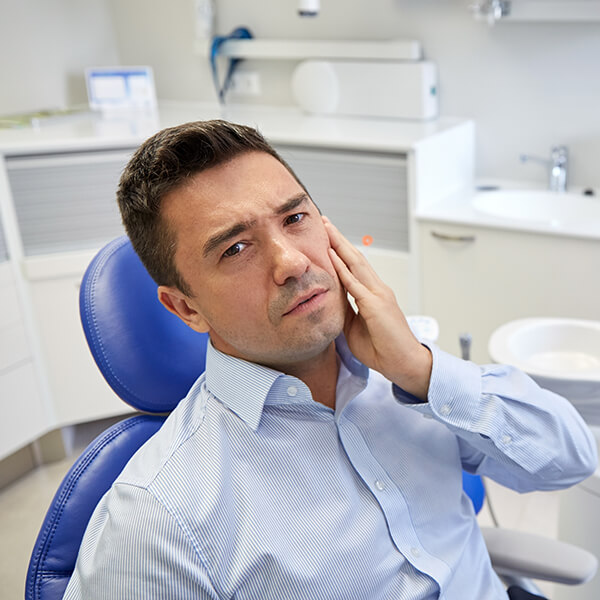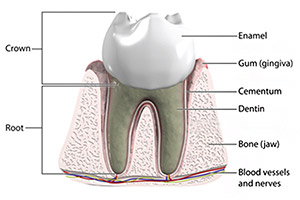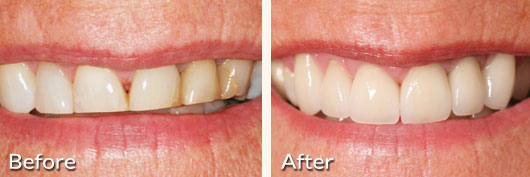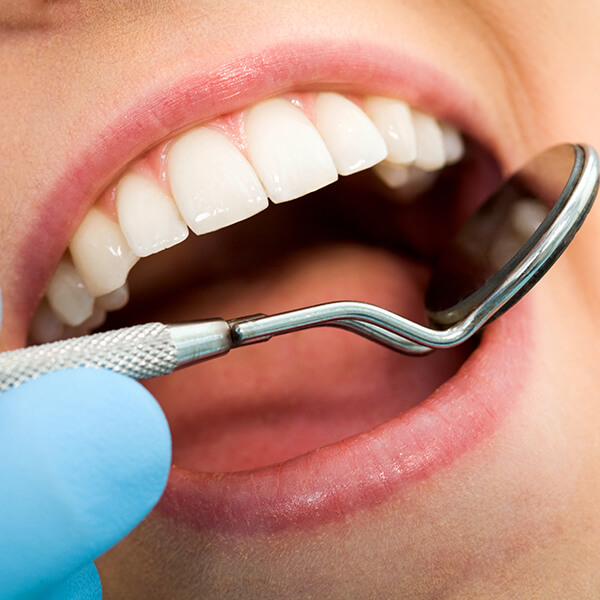Worn-Down Teeth in Mays Landing, NJ
Wear have the years gone? Regaining your smile!
What is the Normal Amount of Wear?


As we age, there is a natural and progressive breakdown that affects every part of our body, including our skin, bones, muscles, joints, internal organs, and even our brains. Unfortunately, teeth are not immune to the effects of aging. Fortunately, our dentists help you with tooth wear solutions in Mays Landing, NJ.
With age, it’s perfectly normal to have a certain amount of wear occur on our teeth. After the age of thirty, it’s considered normal to lose about one millimeter of length of the upper front teeth due to normal wear, for each decade of life. The average forty-year-old should not have more than one millimeter of wear on the edge of their front teeth, two millimeters for a fifty-year-old, and so on.
An extremely common problem in our society today is excessive wear that occurs above and beyond expected age-related wear. More than half of the adults we see in our practice at Dr. John Nosti exhibit extensive wear on their teeth. The result is unattractive smiles with short teeth and spaces between teeth. In many cases when these people smile, you cannot even see that they have teeth! Having this condition makes people appear much older looking than they actually are.
Problems Caused by Worn-Down Teeth

Excessive wear can result in temperature-sensitive teeth, difficulty chewing, chipping and fracturing of teeth, bite-related problems such as headaches and TMJ (jaw joint) problems, and nerve exposure resulting in full-blown toothaches.
Unfortunately, many people are completely unaware that they have a serious tooth wear problem. Tooth wear can occur rapidly over a short period of time, or it can occur gradually over long periods of time. For many people, the wear goes unnoticed, especially if it has taken place more gradually. In addition, sadly, many dentists either do not recognize excessive tooth wear or neglect to inform their patients of the situation.
Those dentists that do recognize excessive tooth wear often may not have the training to properly diagnose the type of wear and may be unsure how to treat the problem. That’s why an accurate diagnosis of the source of the problem is important Excessive tooth wear has several different causes and identifying the specific cause is crucial in choosing the correct treatment.
We have seen many patients over the years that were told by previous dentists that they grind their teeth, were given a nightguard, and that is the extent of their treatment. That would be fine if the only cause of tooth wear was grinding that specifically occurred only during sleep. Recent studies indicate that more than 20% of the U.S. population grind their teeth during waking hours, so we know a night guard is not the appropriate treatment for everyone.

- Mark
Three Different Types of Tooth Wear
What impacts your teeth?
Wear can be caused by:
In some cases, it can be caused by any combination of the three. The key to proper treatment is recognizing and identifying the true cause. For example, a dentist treating excessive wear with a night guard because he or she thinks that grinding is the cause will result in a failed treatment if the true cause is erosion.
-
Attrition: grinding the teeth
-
Abrasion: external forces on teeth
-
Erosion: chemical or acid destruction of teeth
Attrition is the kind of tooth wear that is caused by upper and lower teeth rubbing against each other. As mentioned earlier, a certain amount of wear occurs naturally as we age, but excessive wear caused by opposing teeth rubbing against each other due to daily grinding of teeth can cause serious loss of tooth structure. This type of wear results in patterns on opposing teeth which are called wear facets. In a true case of attrition, opposing teeth will have wear facets that match up. Healthy teeth are covered by a layer of enamel that is approximately 1/8 of an inch thick.
Enamel is the hardest substance in our bodies. Once that is worn through, the inner soft core of the tooth, the dentin, is exposed. Dentin is where the nerve endings are located. Once the dentin is exposed, wear proceeds approximately eight times more rapidly because the dentin is much softer than enamel.
Often the front teeth that are worn have thin, sharp, and jagged edges. The back teeth can have flattened surfaces and worn-down fillings. If there are crowns or caps present on the back teeth they often can have holes present on the biting surface from being worn thin. The wear in these cases can be on the front teeth only, the back teeth only, or both. Treatment can include fabrication of a night guard if the wear is minimal. If the wear is extensive, treatment often requires restoring the teeth back to the original height and establishing a balanced bite, which helps to eliminate the grinding problem.

Abrasion refers to wear that is caused by external forces. The most common is caused by hard brushing and the use of abrasive toothpaste. Also, depending on cultural differences, certain diets can be highly abrasive.
Typically, the type of abrasive wear that we see most is caused by toothbrush abrasion and it often results in notched-out areas at the gum line. Treatment usually involves helping the patient to recognize the cause of the problem so that they can alter what they are doing and then we can restore the worn-away tooth structure. This treatment may only require a simple filling or two with composite bonding.

- Our office has referred many people to a gastroenterologist if we suspect acid reflux disease. Likewise, if bulimia is the cause, we will recommend the appropriate referrals. If soda drinking is causing the problem, we will discuss and try to educate people about the harmful effects. Treatment in any case of acid erosion involves covering the exposed dentin and restoring the teeth to their average size and shape before any further damage can occur. In many cases, the treatment will protect the remaining tooth structure and prevent further damage.


Caring For Healthy Gums

Once your gum disease has been treated, Dr. Nosti will recommend that you schedule professional cleanings, usually four times a year at our Mays Landing office. During these visits, we’ll carefully check the pocket depths to ensure they’re healthy.
In addition to these dental cleanings, you need to establish and maintain a proper at-home oral hygiene routine. This consists of brushing your teeth at least twice a day, flossing daily, and rinsing with an antibacterial mouthwash.



